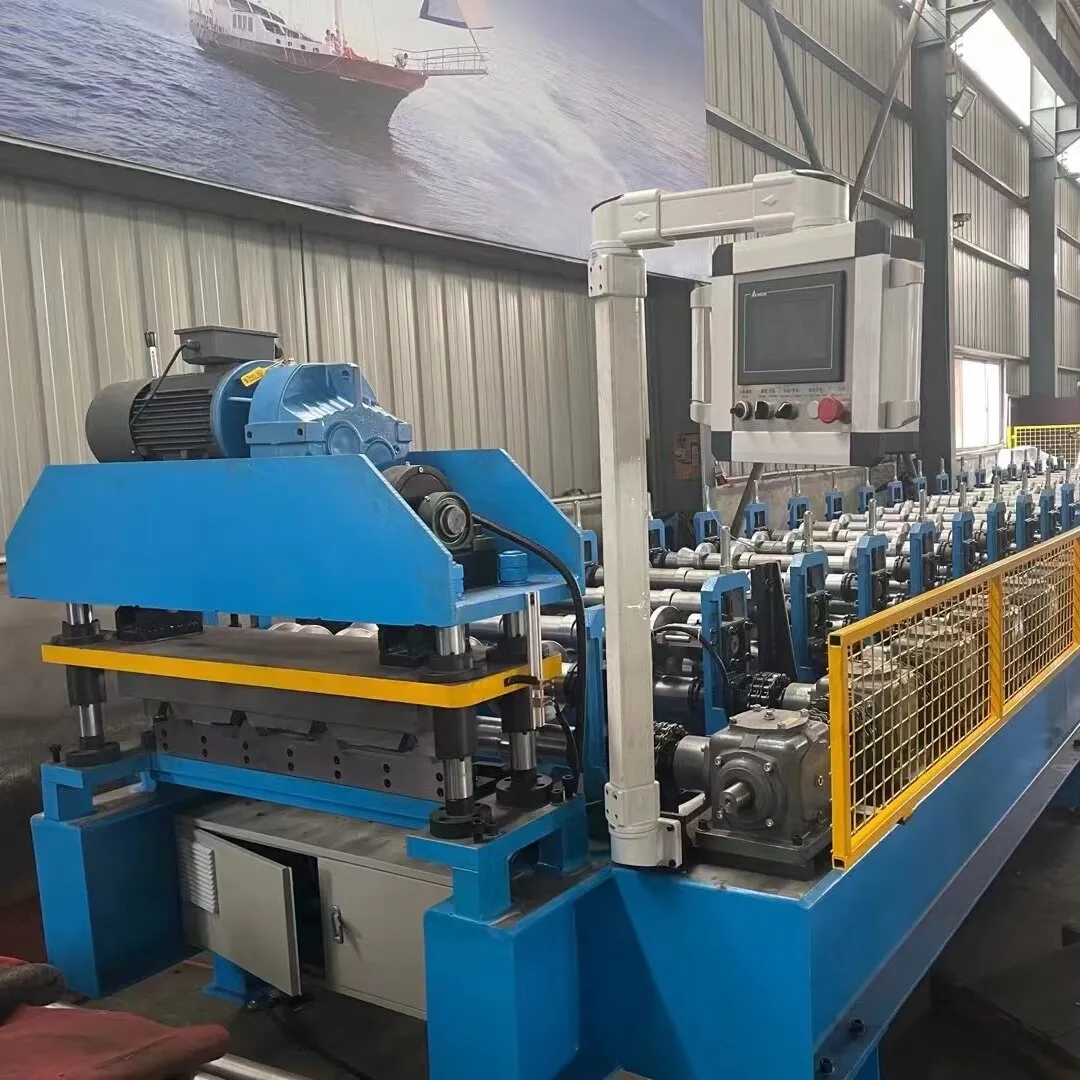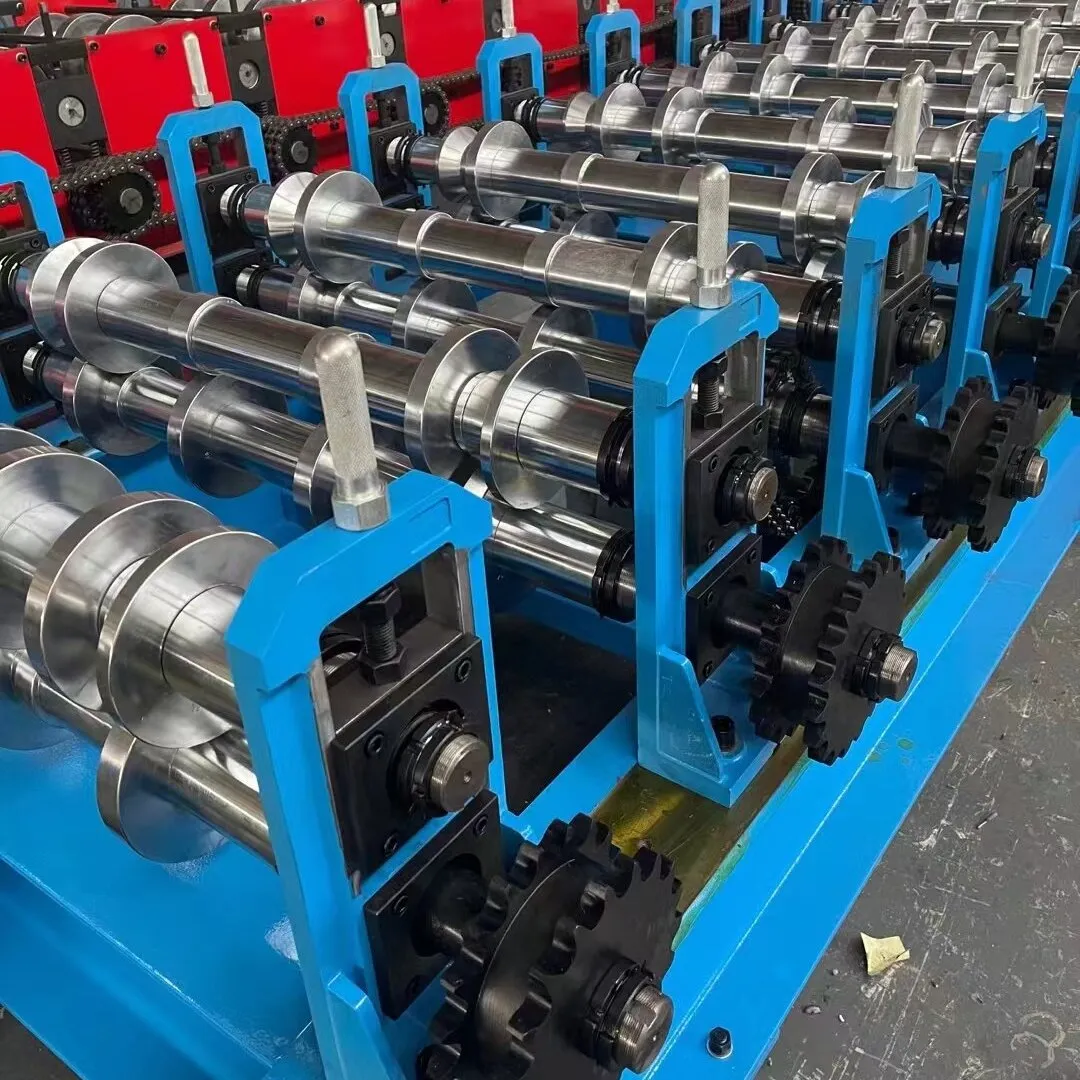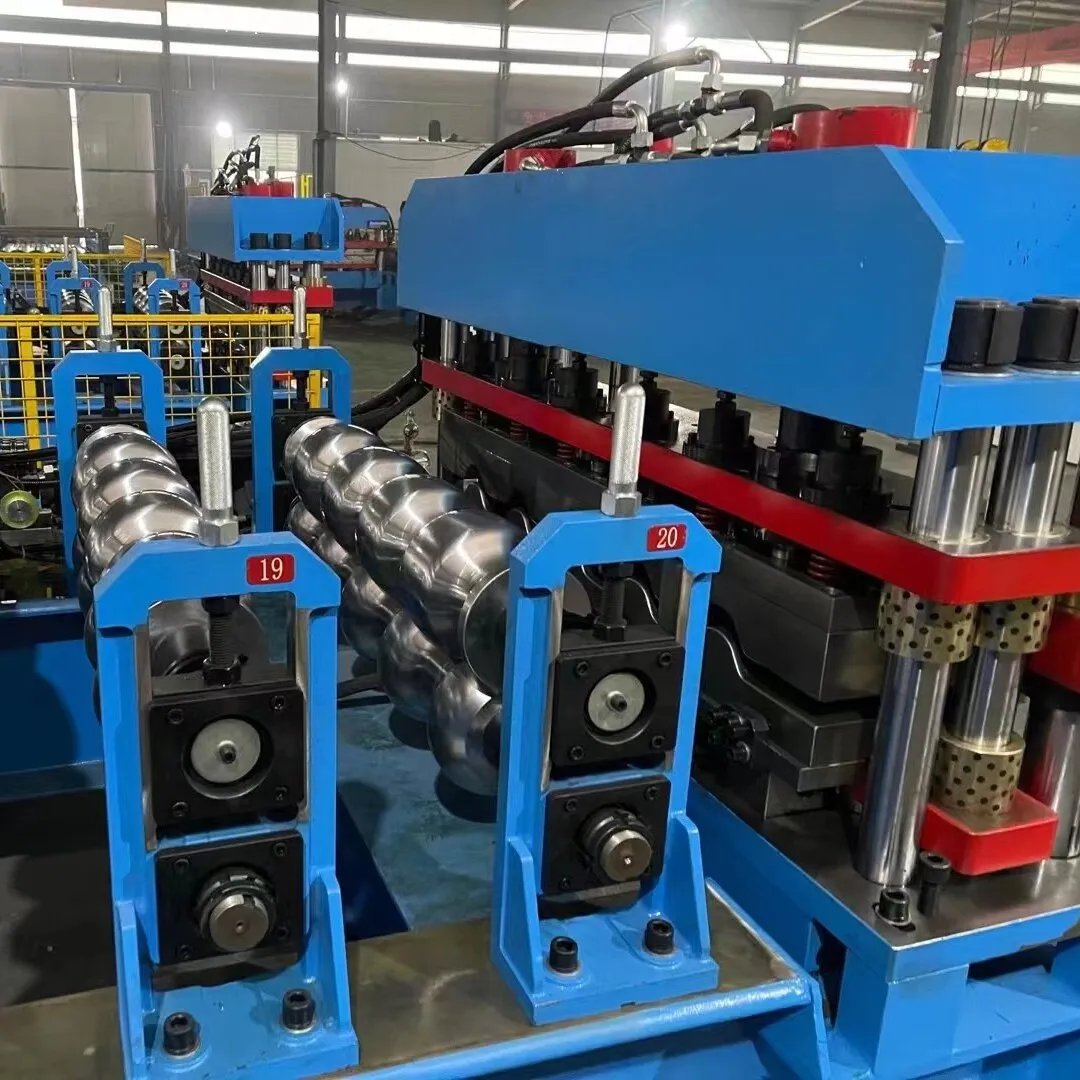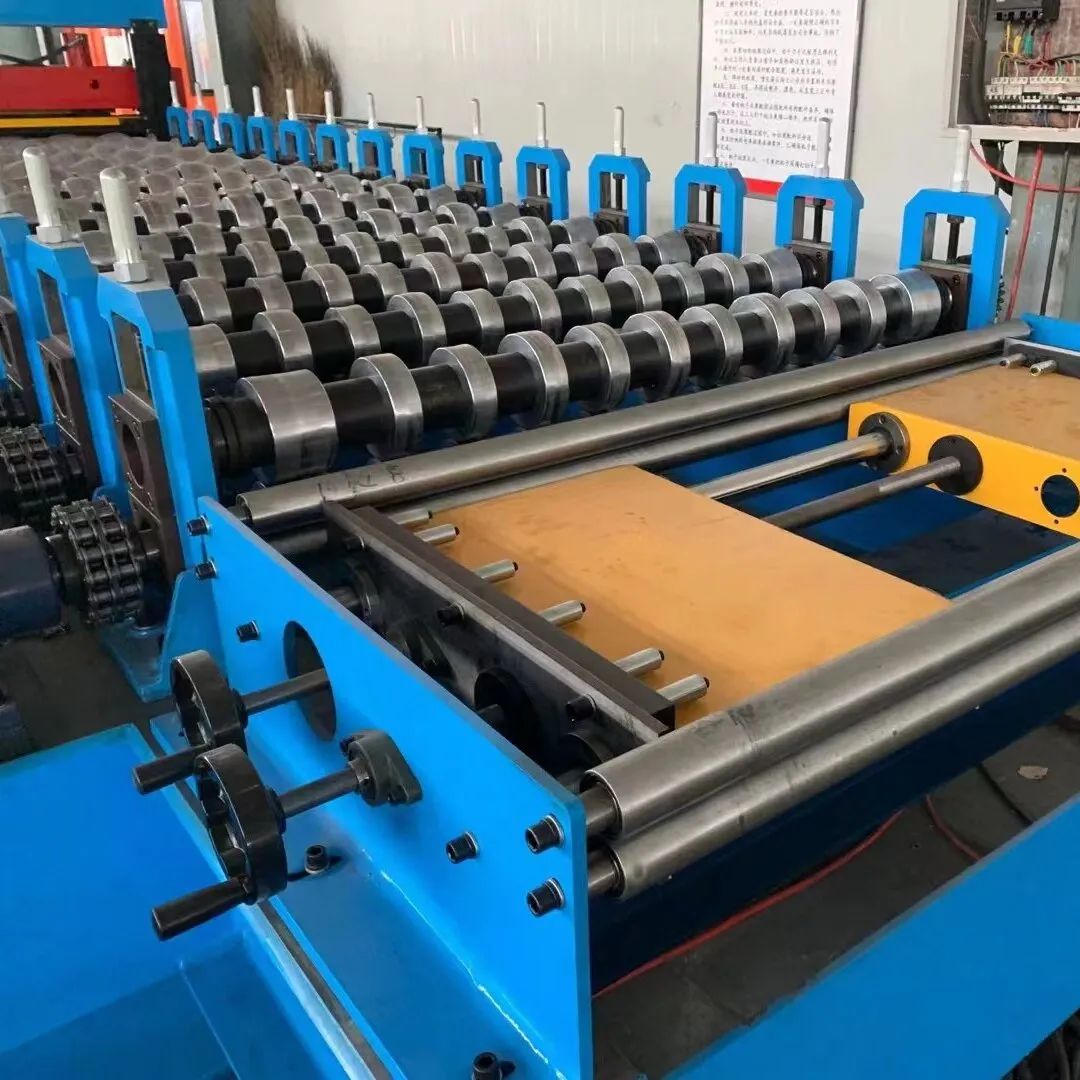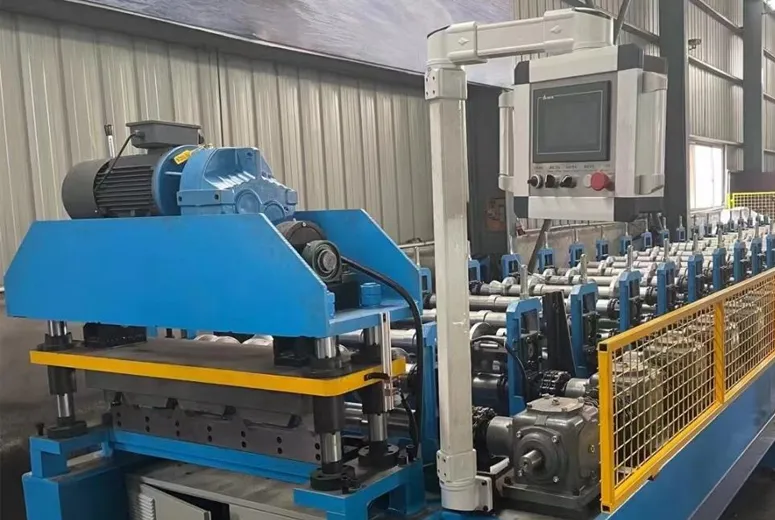
A roof sheet roll forming machine with a gear box is a specialized piece of equipment used in the manufacturing of metal roofing sheets. The gear box is an integral component that helps to control the speed and torque of the machine, ensuring precise shaping and forming of the metal sheets as they pass through the rollers.
Drawings

Working Process

Component
| Manuel De-coiler | x1 set |
| Main roll forming machine | x1 set |
| Hydraulic cutting system | x1 set |
| Hydraulic station | x1 set |
| PLC Control system | x1 set |
| Collection table | x1 set |
Technical Parameters
The inclusion of a gear box in a roll forming machine offers several advantages:
1.Enhanced Torque: Gear boxes increase the torque output, allowing the machine to handle thicker or harder materials without compromising performance.
2.Speed Control: They provide better control over the speed of the rollers, ensuring uniformity in the thickness and shape of the produced sheets.
3.Durability: Gear boxes are designed to withstand heavy loads, which can extend the lifespan of the machine and reduce maintenance costs.
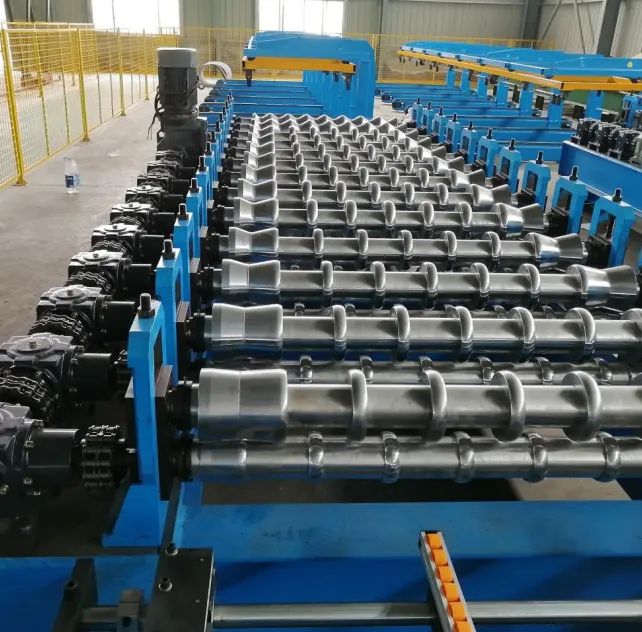
Roof sheet roll forming machines with gear boxes can produce a variety of roofing sheet profiles, including:
1.Corrugated Sheets: Commonly used in agricultural and industrial buildings.
2.Tile Profiles: Designed to mimic traditional tile roofing for aesthetic purposes.
3.Flat Sheets: Used for various applications, including siding and interior panels.
The versatility of these machines allows manufacturers to cater to different market needs and preferences.
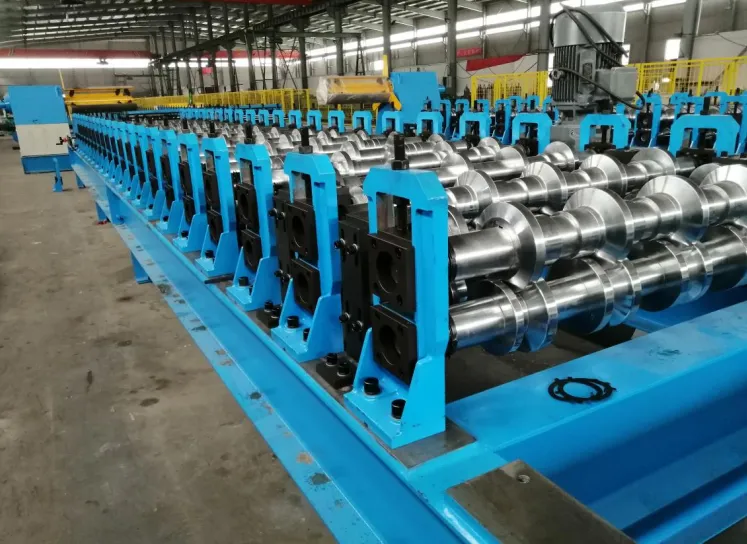
Roof sheet roll forming machines are typically designed to work with a variety of materials, including galvanized steel, aluminum, and other metal alloys. The specific material compatibility may vary depending on the machine’s design and specifications, so it’s important to consult the manufacturer for details.
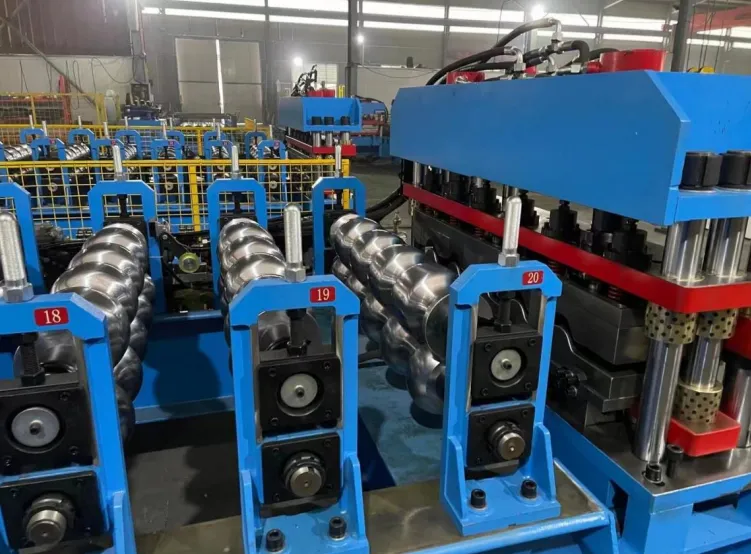
Regular maintenance is essential to ensure the longevity and optimal performance of a roof sheet roll forming machine. This includes routine inspections of the gear box for wear and tear, lubrication of moving parts, checking for alignment issues, and ensuring that all electrical components are functioning properly. Following the manufacturer’s maintenance guidelines will help prevent breakdowns and extend the machine’s lifespan.

